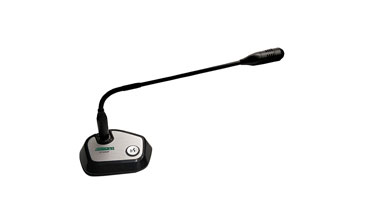

Chat now



The technical parameters document contains a large number of terms and descriptions of pickup pattern, decibels, and frequency responses. However, these parameters do not take environmental factors into account. If you're not an audio expert, these parameters can hardly give you an idea of how a particular type of meeting room microphone system will behave in your conference environment.
Performance differences of meeting room microphone
Aiming at six microphone performance based on user experience (environmental noise immunity, system noise, natural sound, freedom of movement, private language density, aesthetic feeling), qualitative scores are given to the most common microphones of meeting room microphone system. The microphone types include:
Gooseneck microphone
Gun microphone
Linear array microphone
Full Pointing Interface Microphone
Semiconductor Pointing Interface Microphone
Six Properties of Conference Room Microphone
Despite all the puzzling technical jargon, let's explain six features of meeting room microphones from a user's point of view.
1. Ambient noise
To be honest, if you listen to the ambient noise in the meeting room with your headphones, you will be surprised at how much noise there is: rustling paper, moving chairs, falling pens, spilling coffee... Air conditioning and projector fans are not quiet either.
If the meeting room microphone can pick up the speaker's voice accurately and ignore all other noises, the speech clarity in the meeting room will be greatly improved.
Be aware that this is particularly important for meetings with simultaneous interpretation. If your microphone system picks up too much room noise, interpreters will be driven mad and their work will be difficult.
2. Systematic noise
In addition to environmental noise, the system also generates noise. Every electronic circuit produces noise, but some are more or less. The ability of the conference system to deal with system noise depends on the type of microphone, the design process of the circuit and the quality of the components used.
What we need to know is that the more noise, the worse the auditory experience.
 【DSPPA Demo】PAVA8000 EN54 Voice Evacuation SystemNovember 12, 2020Abstract: DSPPA PAVA8000 EN54 Voice Evacuation SystemToday, we are gonna show you a demo about our PAVA8000 EN54 Voice Evacuation System.PAVA8000EN54 Voice Evacuation System can not only support manua...view
【DSPPA Demo】PAVA8000 EN54 Voice Evacuation SystemNovember 12, 2020Abstract: DSPPA PAVA8000 EN54 Voice Evacuation SystemToday, we are gonna show you a demo about our PAVA8000 EN54 Voice Evacuation System.PAVA8000EN54 Voice Evacuation System can not only support manua...view The National Standard Approval Meeting held in BeijingJuly 19, 2019The National Standard Approval Meeting held in BeijingThe approval meeting of the National StandardTechnical standard of public address system engineeringis held in Beijing on July 16, 2019. Xue Chang...view
The National Standard Approval Meeting held in BeijingJuly 19, 2019The National Standard Approval Meeting held in BeijingThe approval meeting of the National StandardTechnical standard of public address system engineeringis held in Beijing on July 16, 2019. Xue Chang...view


